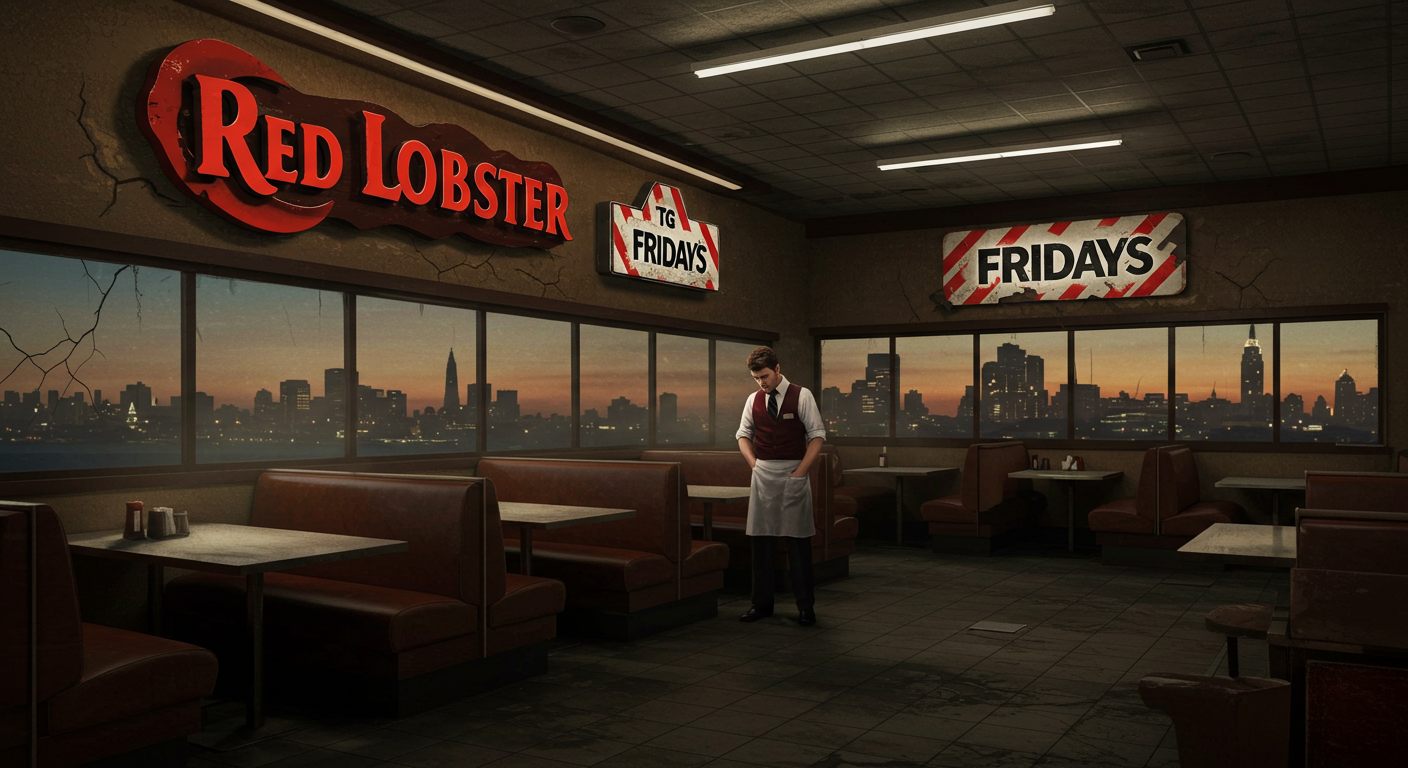In recent months, reports of Red Lobster and TGI Fridays closing locations have raised concern—and curiosity—among loyal diners and industry analysts alike. These two once-dominant brands in the American casual dining sector are now facing the harsh realities of a rapidly shifting restaurant industry.
The closures reflect deeper trends affecting the food service industry, including evolving consumer preferences, rising operational costs, and the disruptive impact of online delivery services. As Red Lobster and TGI Fridays scale back operations, it’s clear that even iconic brands aren’t immune to the challenges of a post-pandemic economy.
The History and Legacy of Red Lobster and TGI Fridays
Red Lobster: The Seafood Chain That Redefined Casual Dining
Founded in 1968 in Florida, Red Lobster was one of the first seafood restaurants to bring mid-range pricing to a traditionally expensive category. Known for its Cheddar Bay Biscuits, shrimp festivals, and endless seafood promotions, Red Lobster quickly grew into a household name with hundreds of locations worldwide.
TGI Fridays: A Pioneer in American Dining Culture
Established in 1965, TGI Fridays helped introduce the “casual dining” concept to mainstream America. With its friendly atmosphere, quirky decor, and wide-ranging menu, Fridays became synonymous with celebrations, happy hours, and family outings.
Both chains thrived for decades, but the current wave of closures signals significant trouble.
What’s Behind the Red Lobster and TGI Fridays Closures?
1. Declining Foot Traffic
Post-pandemic, consumer habits have shifted dramatically. More people are dining at home or choosing quick-service and fast-casual options like Chipotle or Chick-fil-A. This has resulted in declining dine-in traffic for full-service chains like Red Lobster and TGI Fridays.
2. Rising Labor and Food Costs
Labor shortages, wage inflation, and the rising cost of seafood and meat products have created a financial strain. Red Lobster, in particular, has been hit hard by surging seafood prices and supply chain disruptions.
3. Changing Consumer Preferences
Younger generations—Millennials and Gen Z—prefer healthier, more customizable, and often more globally inspired food. Brands that haven’t updated their menus or digital experiences to match these expectations are falling behind.
4. Mismanaged Promotions
Some industry experts believe that Red Lobster’s aggressive “endless shrimp” promotions in recent years may have backfired, with costs outweighing profits. In 2024, this strategy was blamed for significant financial losses.
Scope of the Closures
Red Lobster
As of mid-2024, Red Lobster filed for Chapter 11 bankruptcy, announcing the closure of at least 93 underperforming locations across the U.S. Some of these closures happened abruptly, with employees and customers learning about them just hours before doors were shut.
The company hopes to restructure and focus on its more profitable locations, international operations, and potential franchise models.
TGI Fridays
TGI Fridays is also scaling back operations. In early 2024, the brand announced the closure of 36 corporate-owned restaurants, mainly in markets with overlapping locations or poor performance. The company cited a strategic shift toward franchising and digital modernization.
Industry Reaction and Public Response
The news of Red Lobster and TGI Fridays closing locations has sparked mixed reactions. While some loyal customers are expressing disappointment, others view it as a wake-up call for the entire casual dining segment.
On social media, long-time patrons shared memories of birthday dinners, first dates, and family outings at both chains. Yet others acknowledged that they hadn’t visited in years—opting instead for food delivery, home cooking, or newer dining experiences.
Broader Impact on the Restaurant Industry
A Shift Toward Fast-Casual
Brands like Panera Bread, Shake Shack, and Sweetgreen are gaining market share by offering faster service, higher-quality ingredients, and strong digital ordering systems. These fast-casual models are seen as more adaptable and cost-efficient than legacy casual dining chains.
Pressure on Legacy Chains
Red Lobster and TGI Fridays are not alone. Other restaurant giants such as Applebee’s and Chili’s have also struggled to maintain relevance. The pressure to innovate—whether through tech integration, menu revamps, or sustainability—has never been greater.
Real Estate and Job Losses
The closures will result in thousands of job losses and leave behind dozens of large-format restaurant spaces. Some locations may be taken over by emerging restaurant brands, ghost kitchens, or even converted into retail or coworking spaces.
Can Red Lobster and TGI Fridays Bounce Back?
Restructuring and Rebranding
Red Lobster hopes its bankruptcy filing will allow it to restructure debt, close unprofitable stores, and focus on its core strengths. Executives suggest a renewed focus on international markets, simplified menus, and modernized service.
TGI Fridays, now emphasizing franchising, is betting on localized ownership and updated interiors to attract younger guests. The company is also investing in delivery partnerships and a revamped digital app to improve customer convenience.
Innovation Is Key
Both brands must adapt to modern expectations. This includes:
-
Sustainable food sourcing
-
Tech-enhanced ordering (apps, kiosks, AI integration)
-
Healthier, more flexible menu options
-
Social media engagement and influencer collaborations
Final Thoughts
The closures of Red Lobster and TGI Fridays mark a critical turning point for the casual dining industry. These once-dominant brands are being challenged by shifting tastes, rising costs, and tech-driven disruption.
Still, there is hope. With smart restructuring, targeted innovation, and a willingness to evolve, both Red Lobster and TGI Fridays have the potential to survive—and even thrive—once again. But they must act fast and boldly to reclaim relevance in a market that is no longer forgiving of stagnation.
For consumers and industry watchers alike, this is more than the story of two chains—it’s a snapshot of a changing American dining culture.
